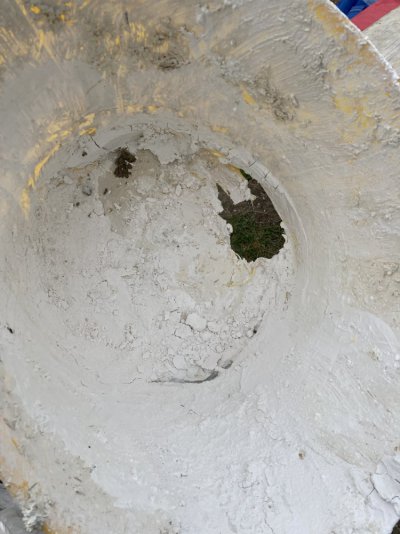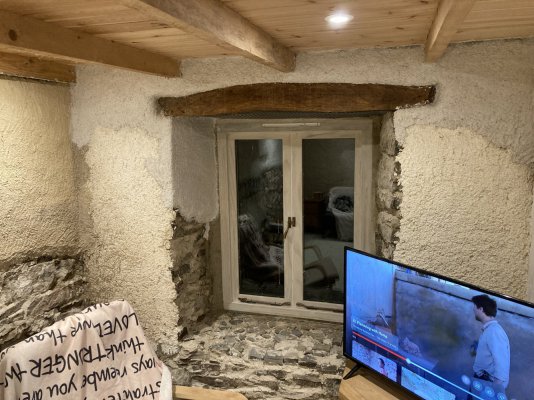Toby Newell
Member
- Messages
- 1,635
- Location
- Surrey
Amazing dry stone. How thick are the walls?
Thanks, they’re about 2 foot thick.Amazing dry stone. How thick are the walls?
That's pretty good insulation qualities straight off the bat, your hemp & lime plaster will be the icing on the cake.Thanks, they’re about 2 foot thick.

Yeah even pre-mixing the dry cork and quicklime before adding the water hasn’t stopped it from combusting some of the bio-aggregates. I’m going to switch to fresh hydrated lime and stop attempting to hot-mix with quicklime. Too much hassle, too dangerous, too damaging on the bio-aggregates and I don’t fully believe the explanations for its supposed benefits over non-hydraulic hydrated or putty lime.Interesting. It's quite an exothermic reaction.
Could you not just add the bio aggregates after it has cooled?Yeah even pre-mixing the dry cork and quicklime before adding the water hasn’t stopped it from combusting some of the bio-aggregates. I’m going to switch to fresh hydrated lime and stop attempting to hot-mix with quicklime. Too much hassle, too dangerous, too damaging on the bio-aggregates and I don’t fully believe the explanations for its supposed benefits over non-hydraulic hydrated or putty lime.
Yeah but that’s where the supposed advantages of hot-mixed mortars seems to lie, so at that point I don’t see any reason not to switch to hydrated lime, as long as it’s fresh.Could you not just add the bio aggregates after it has cooled?

If you going to use hydrated lime from the builders yard I would put aside a 'briquette' when you make it into putty and wait for it to dry. If it sets hard the batch is good to go of course. Hydrated powdered lime is renowned for going off in storage.Annnnd, I melted my plastic mixing bucket…View attachment 12316
I do almost all the slaking / hot mixing in a metal garbage bin but I ran out of space to complete the ratios on my latest slaking batch (as I tried to fit a double batch and it was ever so slightly too small), so I had to move some of it into this plastic tub while it was mid-slake. Next thing I know, molten plastic mixed with lime-juice is pouring out the bottom onto the gravel driveway.
I’m definitely going to switch to using fresh hydrated lime. This is too much work and I’m finding the full-on slaking reaction too difficult to control.
Yes this has been my growing suspicion as well.Sorry, I don't know any advantage to hot mixing from a theoretical point of view. PH is 12.5 which is super high so it will start to dissolve any organic material anyway at any temperature, if that is important for bonding to the lime matrix. I just don't see what the scientific advantage is. Edit: I mean in the context of mixing with organic aggregate.
Ok that’s a good tip, thank you.If you going to use hydrated lime from the builders yard I would put aside a 'briquette' when you make it into putty and wait for it to dry. If it sets hard the batch is good to go of course. Hydrated powdered lime is renowned for going off in storage.

Thanks! Yeah possibly… now I just need to replicate it…Looks amazing, like porridge, I guess you found the goldilocks mix...
Well done! Looks greatWell I slaked a full 25kg bag of quicklime totally by itself (in my metal bin) yesterday afternoon and then only mixed the dry ingredients into it late this afternoon ready for our evening plastering session.
That worked MUCH better. No burning aggregates, and I was able to use less water so the reaction seemed more controlled. It just happily and calmly boiled away for a couple hours. It also made a dryer, stiffer, more plasticy mix which was delightful to work with.
We did some detailing above and around the lintel and started the plastering within the window reveal itself.View attachment 12324
